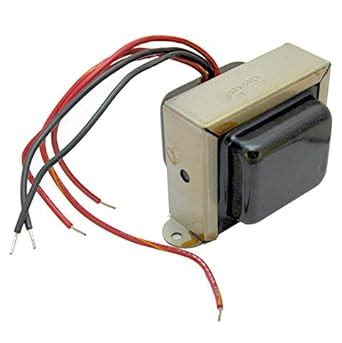What is a Center-Tapped Transformer?
A center-tapped transformer is a type of transformer that has a connection at the midpoint of its secondary winding, creating two equal voltage outputs. This center tap allows for the creation of a dual-voltage output from a single transformer, making it a versatile component in various electrical applications.
Construction and Working Principle
The construction of a center-tapped transformer is similar to that of a standard transformer, with a primary winding and a secondary winding wound around a core. However, the secondary winding is split into two equal parts, with a connection made at the midpoint, known as the center tap.
When an alternating current (AC) is applied to the primary winding, it induces a magnetic field in the core. This magnetic field, in turn, induces an electromotive force (EMF) in the secondary winding. Due to the center tap, the voltage induced in each half of the secondary winding is equal to half of the total secondary voltage.
Voltage Relationships
The voltage relationship between the primary and secondary windings of a center-tapped transformer can be expressed as follows:
V_P / V_S = N_P / N_S
Where:
– V_P is the primary voltage
– V_S is the total secondary voltage
– N_P is the number of turns in the primary winding
– N_S is the total number of turns in the secondary winding
Since the secondary winding is center-tapped, the voltage across each half of the secondary winding (V_S1 and V_S2) is equal to half of the total secondary voltage:
V_S1 = V_S2 = V_S / 2
Applications of Center-Tapped Transformers
Center-tapped transformers find applications in various electrical and electronic systems, such as:
1. Full-Wave Rectification
One of the most common applications of center-tapped transformers is in full-wave rectification circuits. In this configuration, the center tap acts as a common ground reference for two diodes connected to each end of the secondary winding. This arrangement allows for the conversion of AC to DC with reduced ripple and improved efficiency compared to half-wave rectification.
2. Dual-Voltage Power Supplies
Center-tapped transformers are often used in power supplies that require multiple voltage outputs. By using the center tap as a common reference point, two different voltage levels can be obtained from a single transformer. This is particularly useful in electronic devices that require both positive and negative voltage supplies, such as operational amplifiers and audio amplifiers.
3. Three-Phase Power Systems
In three-phase power systems, center-tapped transformers can be used to create a neutral point for grounding purposes. The center tap of each transformer is connected together to form a neutral point, which helps to balance the voltages and currents in the system and provides a reference point for safety grounding.
4. Audio Applications
Center-tapped transformers are used in various audio applications, such as in Push-Pull Amplifier circuits. In these circuits, the center tap of the output transformer serves as a common ground reference for the two halves of the amplifier, allowing for efficient power delivery to the load (e.g., speakers).
Advantages and Disadvantages
Center-tapped transformers offer several advantages, including:
- Dual-voltage output from a single transformer
- Improved efficiency in rectification circuits
- Reduced ripple in DC output
- Provides a neutral point for grounding in three-phase systems
However, there are also some disadvantages to consider:
- Increased complexity compared to standard transformers
- Higher cost due to additional windings and taps
- Larger size and weight compared to standard transformers

Frequently Asked Questions (FAQ)
1. What is the difference between a center-tapped transformer and a standard transformer?
A center-tapped transformer has a connection at the midpoint of its secondary winding, allowing for dual-voltage output. A standard transformer does not have this center tap and provides a single voltage output.
2. Can a center-tapped transformer be used as a standard transformer?
Yes, a center-tapped transformer can be used as a standard transformer by simply ignoring the center tap connection and using the full secondary winding.
3. How does a center-tapped transformer improve efficiency in rectification circuits?
In full-wave rectification circuits using a center-tapped transformer, both halves of the AC input are utilized, resulting in reduced ripple and improved efficiency compared to half-wave rectification.
4. What is the purpose of the center tap in a three-phase power system?
In three-phase power systems, the center taps of the transformers are connected together to create a neutral point. This neutral point helps to balance the voltages and currents in the system and provides a reference point for safety grounding.
5. Are center-tapped transformers more expensive than standard transformers?
Yes, center-tapped transformers are generally more expensive than standard transformers due to the additional windings and taps required in their construction.
Conclusion
Center-tapped transformers are versatile components that find applications in various electrical and electronic systems. By providing a dual-voltage output from a single transformer, they offer advantages such as improved efficiency in rectification circuits, reduced ripple in DC output, and the ability to create a neutral point for grounding in three-phase systems.
However, these benefits come at the cost of increased complexity, higher cost, and larger size compared to standard transformers. Understanding the working principles and applications of center-tapped transformers is crucial for engineers and technicians working in the field of electrical and electronic engineering.
As technology continues to advance, the use of center-tapped transformers may evolve, but their fundamental role in providing efficient and reliable power conversion will remain essential in many applications.

No responses yet